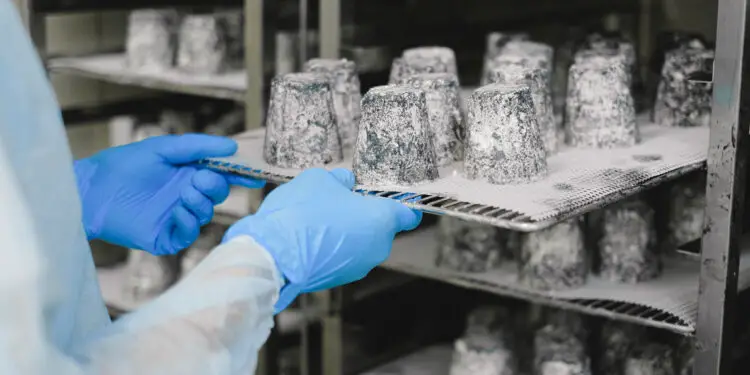How Restaurant Food Hygiene is Changing

Restaurant businesses should never overlook the importance of proper food hygiene. All those involved in the food handling preparation must be fully aware of food hygiene regulations, their responsibilities, and the best practices to meet safe food standards.
The food industry is very dynamic, and so does food hygiene standard. It changes yearly, influenced by recent health concerns and customer preferences. But if there’s one thing that changed the whole dynamics of the food industry as of late, it would be the Covid-19 pandemic, which shifted every food safety trend predicted in the past years. Below, let’s find out how restaurant food hygiene is changing.
1. The Change from Brexit
The UK’s food industry has been affected after the country left the EU due to the shortages of labour and increasing cost of ingredients, impacting the food supply chain. It also affected the standards of food hygiene and safety.
Due to resourcing pressures local authorities face, there has been a decline in the number of inspections of businesses in the food industry, such as restaurants. In addition, the delay in establishing control over UK imports of high-risk food from the EU, such as meat, eggs, and dairy, has reduced the ability to prevent the entry of unsafe food into the UK market.
Food campaigners warned that Brexit could lower food safety standards, and consumers could end up with unsafe food products that could damage animal welfare, promote intensive farming, and trigger the growth of diseases like superbugs resulting in the overuse of antibiotics in the farm industry.
Under post-Brexit, ministers could implement wide-ranging powers to modify the standards on food and agriculture. These include changing the type of medication for livestock or adjusting the pesticides to apply.
A survey on free trade deals with the US shows that British consumers are unwilling to sacrifice their food standards for free trade deals. Almost 80% of those who responded to the survey revealed that they are not willing to accept lower-quality imports, such as those vegetables grown using pesticides banned in the EU. The majority has also objected to consuming hormone-fed chicken.
2. The Change after COVID
The Covid-19 pandemic triggered significant changes in UK food safety in many ways. Almost every restaurant has to adapt its operations in some way. While the more common things, such as the surge of takeaways and deliveries and the mask-wearing, received lots of attention, the pandemic has caused changes in food businesses in some subtle ways.
Many people have not realised how much the pandemic has changed food safety. The basics are the same, such as regular handwashing, avoiding cross-contamination, and thorough cooking. However, some people fail to recognise that cognitive overload and supply chain disruptions brought about by the pandemic have affected the processes of food safety.
Cognitive overload during the Covid-19 pandemic has caused too much stress on employees, overwhelming the number of tasks they need to remember at a given time. Short-staffed shifts, cranky customers, and new processes on sanitation have further contributed to cognitive overload.
The Covid-19 pandemic has caused significant disruptions in the food supply chain, compromising food safety. While things are better now, some ongoing issues with certain products, such as increasing rates, could affect profitability and food safety.
3. More Pressure on Food Hygiene
People in the restaurant industry can feel more pressure on food hygiene over recent years, mainly due to Brexit and Covid-19 pandemic. Thus, food businesses are now giving more importance to the safety of the food supply chain.
Faced with pressure on food hygiene, learning courses in food safety and hygiene are now necessary for those working in the food industry. The training is crucial for anyone handling food in their job. It helps to ensure that the food they prepare and serve is safe for consumption.
Aside from undergoing training, food businesses are starting to invest in technology and software programs to improve the food supply chain. Some have gone paperless to achieve a more sustainable operation, while others streamlined their processes to improve food hygiene and safety.
The pressure has also caused food businesses to increase awareness and integrate practices to prevent another pandemic. Aside from the efforts of food businesses, food agencies like the Food and Drug Administration have also extended their efforts by drawing guidelines for safer operations.
4. Update in Food Safety Regulations
One of the most significant updates on Food Safety Regulations is the implementation of Natasha’s Law in 2021. The law requires all food businesses to include a list of ingredients on food labels before distributing food products in the market. It aims to protect those with allergies, giving them more confidence in buying and ordering food.
Named after Natasha Ednan-Laperouse, who died due to an allergic reaction to a baguette, the law is also called the UK Food Information Amendment. Natasha suffered an anaphylactic reaction to the sesame seeds in the baguette from Pret a Manger. There has been no mention of ingredients or allergen information on the packaging. Her parents insist that if the baguette came with proper labels, Natasha would have avoided consuming it.
The Natasha’s Law requires any company selling pre-packed food items for direct sales, such as salads, cakes, and sandwiches, to provide a complete list of ingredients on the labelling.
5. Consumers are More Aware of Food Safety
Consumers have become more aware of food safety thanks to the increasing awareness over the past few years. A survey revealed that more than half of consumers are now more conscious of food safety and hygiene when dining at food outlets.
Over three-quarters of those who participated in the survey have said that a lack of confidence in a restaurant’s hygiene will keep them from dining there. Furthermore, 65% said they avoid eating at a place if they are not confident in the establishment’s food safety standards.
The survey proves that people are becoming more aware of food safety and hygiene. Therefore, restaurants should demonstrate a commitment to putting the health and safety of customers, giving them much-needed reassurance.










